Stitching the sole to the upper is not practical enough to prevent moisture ingress and risks damaging the sewing thread.

Sew shoes yourself - step by step
Handmade shoes are in high demand due to their quality and durability - usually natural materials are used in the manufacture of handmade shoes, which places higher demands on the quality of the end product. As a result, the price of handmade shoes is higher than products sewn in automated production.
Even in the age of maximum automation, handmade shoes are no gimmick. The classic English manufactures known all over the world:
They make shoes from natural leather and suede, which are sewn by hand. There are many more production steps than in automated mass production. Depending on the type of material and the complexity of the shape, a pair can be made in a month.
As for the shapes and designs, handmade shoes are the most popular:
They differ in the type of lacing. Oxfords have closed lacing that is hidden by the front of the shoe. Wedges are sewn into the sides and perforation is possible.
Derbies, on the other hand, have open lacing and the side panels are sewn to the front panel, allowing the shoe to spread freely when the laces are untied. Derby shoes can also be perforated and are considered the most versatile shoe for any occasion.
Structural Features
The entire construction of the shoe is divided into an upper and a lower part. The shaft consists of the following components:
- Cover sole - covers the toes and withstands the greatest mechanical loads when worn.
- Sock - covers the top of the foot and connects the toes, tongue and shin.
- Ridge - covers the hock and is sewn to the hock.
- Loops - the upper part of the shoe intended for lacing holes or hooks.
- Heel Cuff - protects the heel and foot, secures the heel and is made of durable leather.
- Tongue - covers the upper part of the foot and is sewn to the sole of the shoe.
- Insole - connects the upper and lower part of the shoe.
- Outsole - is sewn to the upper along the contour and is divided into instep, heel, sole and filling.
- Heel – raises the heel and connects to the sole, the top layer can be rubber.
- Heel Padding - protects the heel from abrasion.
- Edge - connects the different parts together.
- Heel padding - prevents rubbing of the bottom layer of the heel.
- Filling - fills the space under the insole and increases comfort.
- Insole – a piece of wood or metal attached between the sole and the insole.
If you know the structure of the shoe, you can better match the individual parts to their intended use.
basic requirements
Both proven and modern raw materials made with new technologies are used in the production. Each of these materials has its own characteristics, which are determined by the composition of the ingredients and the intended use of the end product.
The material for the shoe sole must meet the following requirements:
- Durability. It must be able to withstand the intense vertical pressure and constant impacts that are inevitable when walking.
- abrasion resistance. Friction is one of the factors that lead to premature wear of the sole.
- Flexibility, resilience. This property ensures comfort of movement by restoring the shoe upper to its original state.
- softness. The soles of quality shoes provide a comfortable environment for the feet by cushioning the impact of uneven ground or sudden movements.
- thermal conductivity. This property is important for winter shoes, where insulating the foot against the cold is crucial.
When buying boots, shoes or sneakers, it is advisable to inquire about what material the product is made of. This will help you make the right choice to keep your feet comfortable in all weather conditions.
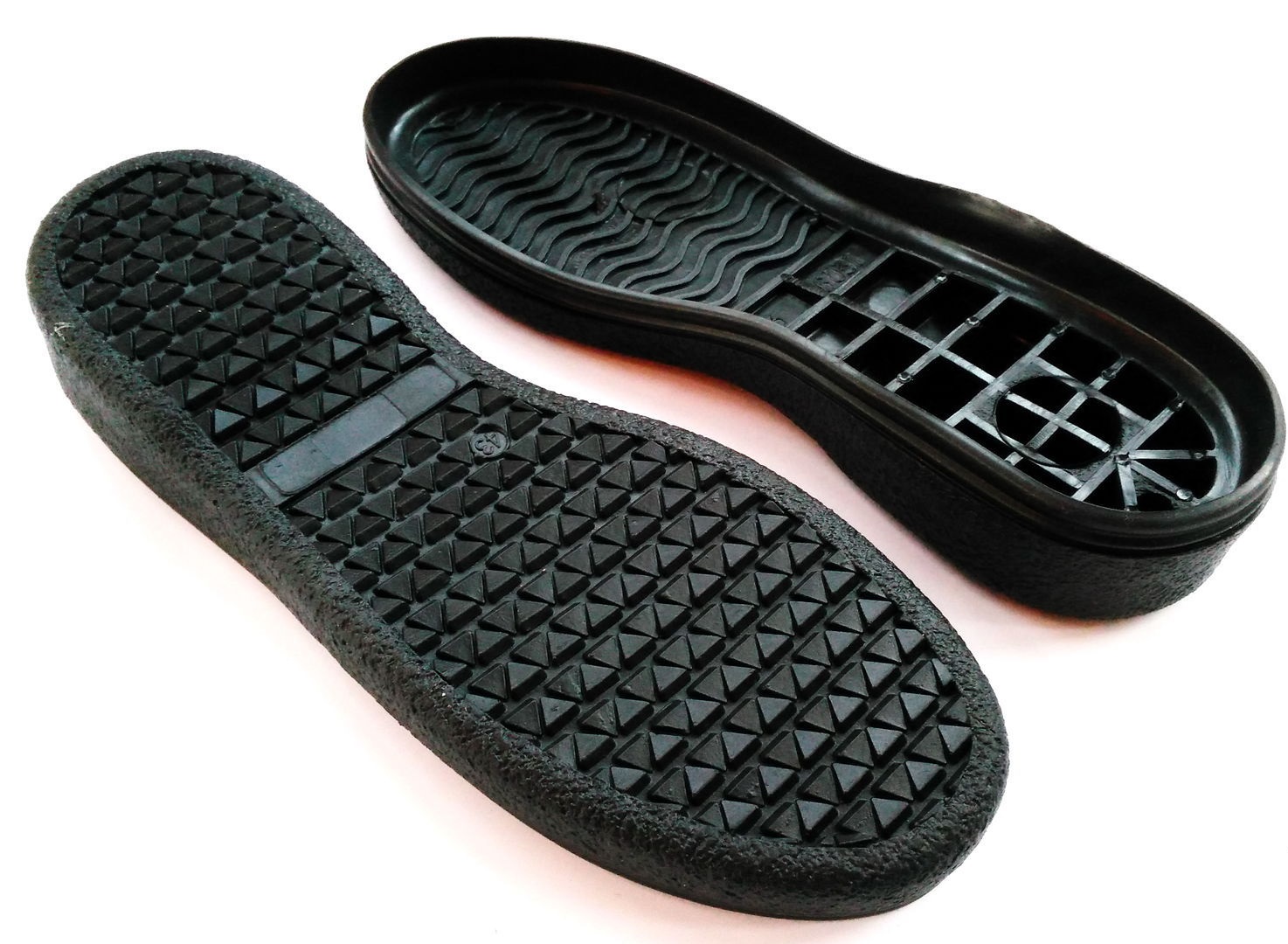
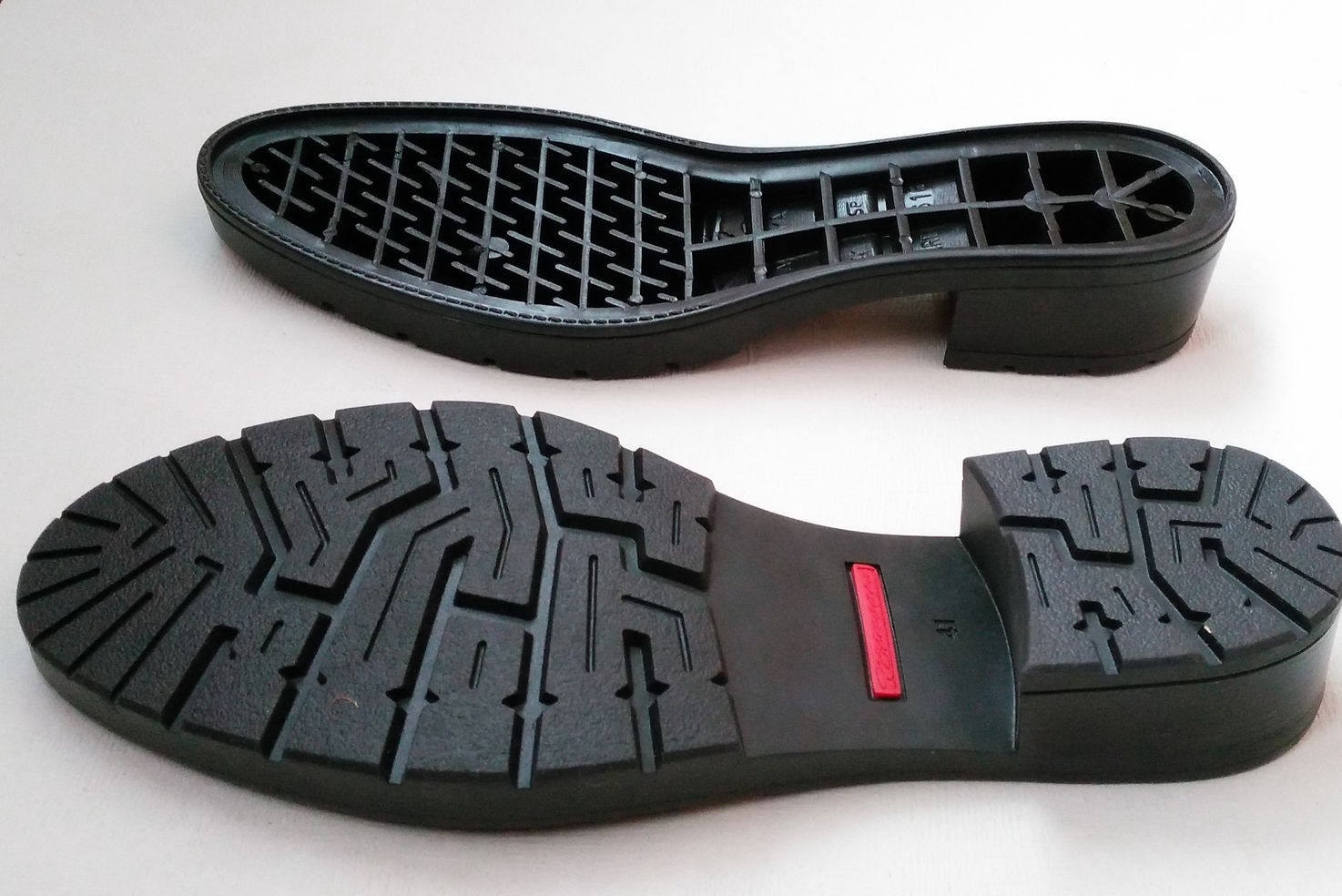
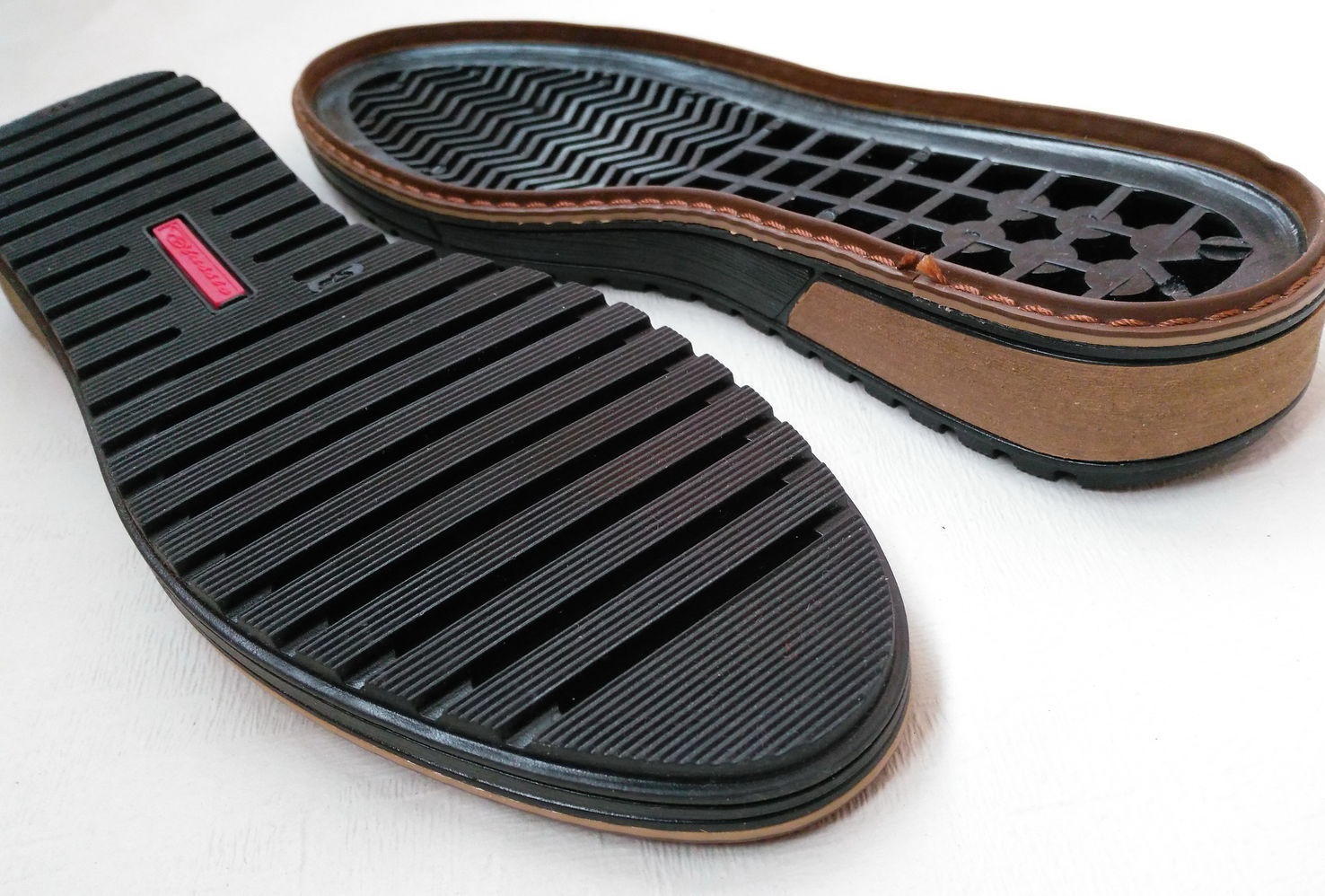

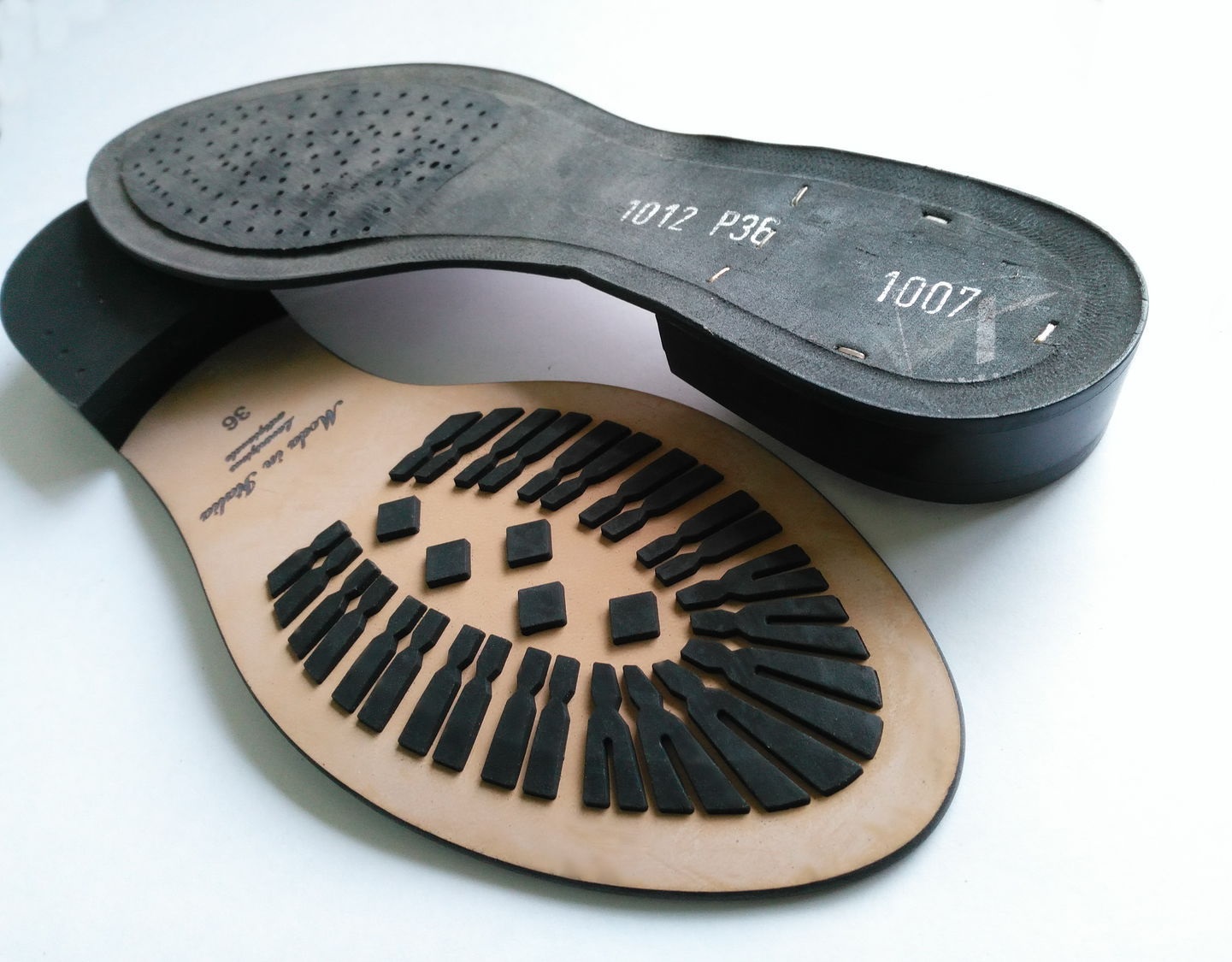
Building materials by model
When designing and manufacturing a shoe, the sole material that best suits its purpose and design is used.
Modern industry uses the following types of raw materials:
- polyurethane. Represents a foam mass of black color. It is characterized by low thermal conductivity, softness and light weight. The disadvantages include poor durability, rapid abrasion.
- Thermoplastic polyurethane. This material is obtained by molding under pressure. Such shoe soles have density, wear resistance, presentable appearance. The disadvantage is the low thermal insulation.
- Combined polyurethane. The sole consists of two layers, resulting in higher density, abrasion resistance and protection against the cold. The disadvantage is that the two layers can separate from each other.
- Thermoplastic Elastomer. The material is porous, light and effectively protects feet from the cold. Despite their low density, TPE soles are very resistant to friction and have a long service life. The disadvantage is that the sole cannot be molded clearly and evenly.
- polyvinyl chloride. This material is dense and heavy. It can be dyed any color during the production process. It is characterized by its reliability and durability. The disadvantage is the high specific weight.
- ethylene vinyl acetate. This is a vulcanized foam and has excellent flexibility, softness and resilience. Its disadvantages are instability at low temperatures and gradual volume reduction under pressure.
- Synthetic rubber. This material meets all the requirements for the quality of shoes. The disadvantages are the high cost of raw materials and high production costs.
- Tunit (kozhvolon). It is a composite of rubber and natural leather. It provides ventilation of the soil. The disadvantages of artificial leather are numerous - it is heavy, hard and wears out quickly.

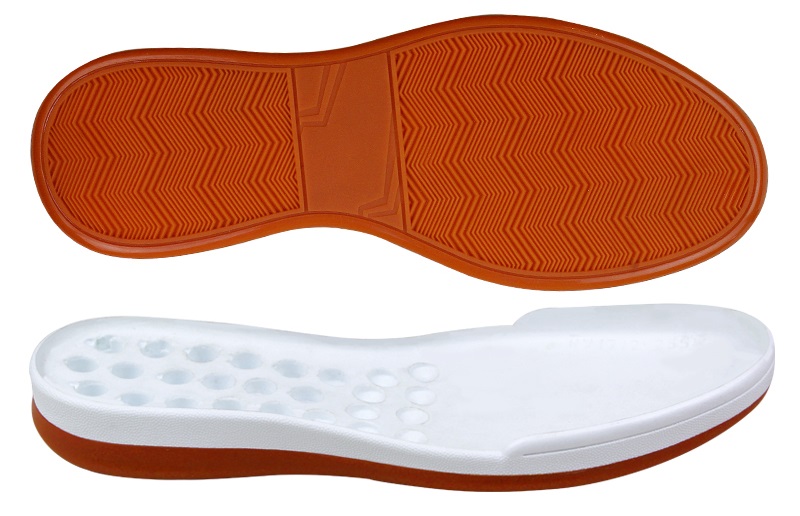
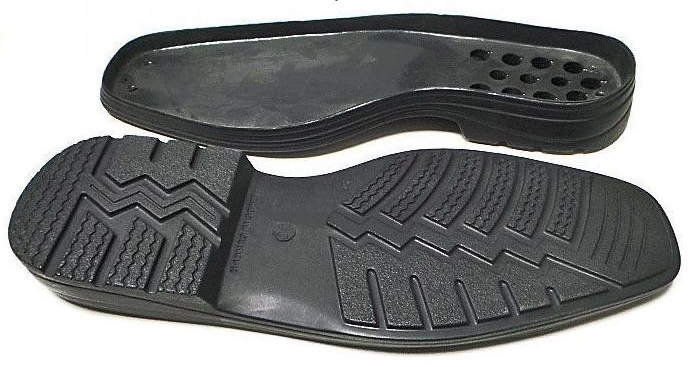
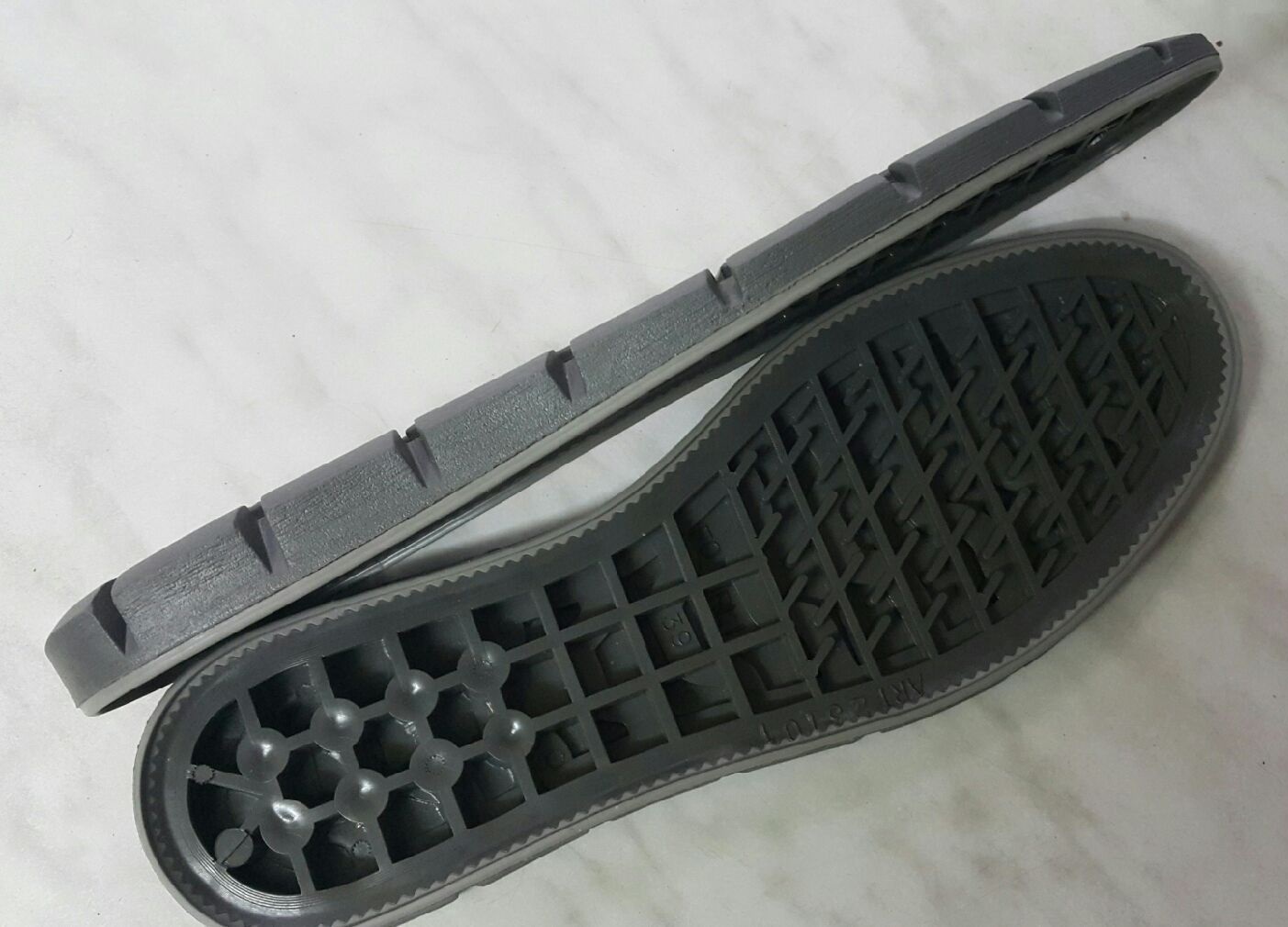
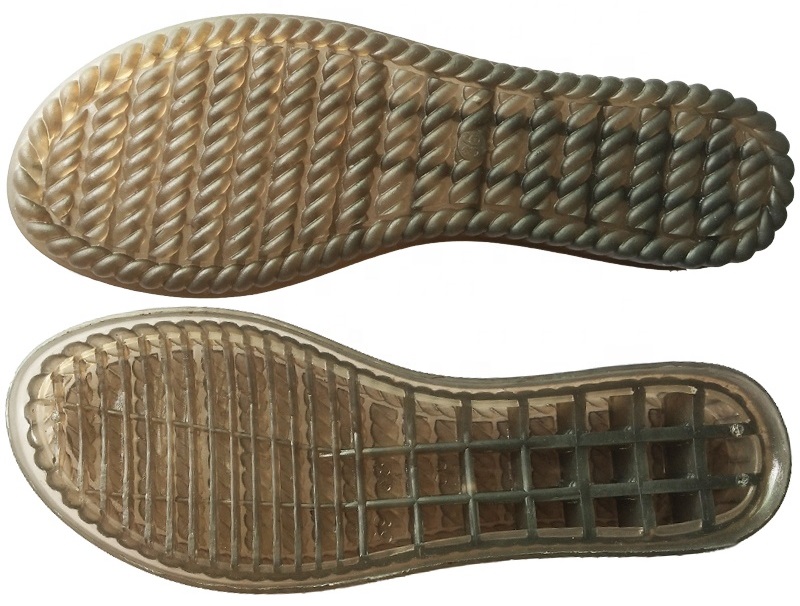
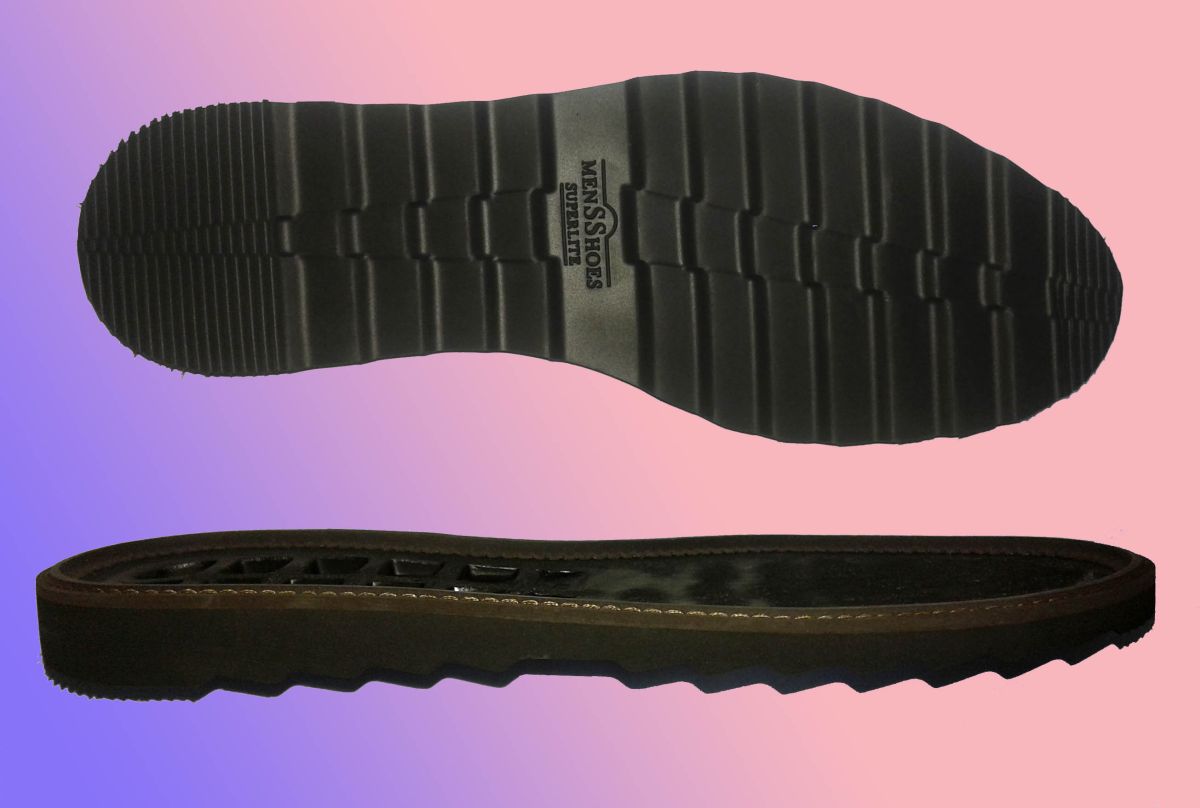
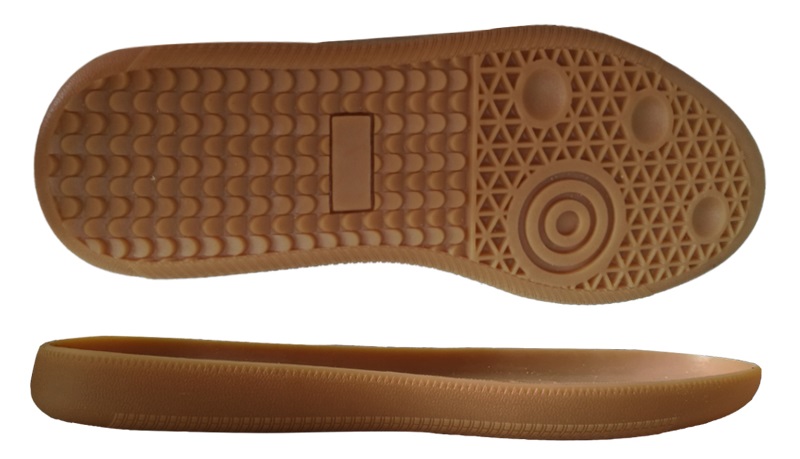

our advantages
The manufacturers of shoes choose the company 'Uglich Plast ., for the following reasons:
- Possibility to buy TPE material for shoes with different chemical compositions: SBS (SBS- styrene elastomers), TPU (TPU- thermoplastic urethanes), EPDM (EPDM- ethylene propylene rubber);
- Constant availability from our warehouse in Uglich;
- Each batch of material is quality controlled in our own certified laboratory to ensure the finished products conform to published specifications;
- For regular customers we offer discounts and individual conditions;
- A complete production cycle in our own facilities allows us to set competitive prices for our goods.
We also produce Tep seals, materials for auto accessories, children's toys, medical supplies and more.
For more information please call 'Uglich Plast'at the phone number 8 800-200-15-43
Methods of attaching soles
Unfortunately, there are no perfect methods to get 'eternal' shoes.
quilting method – The oldest and proven method of attaching the sole. It is used today for classic and casual wear. The quality of such attachment depends on the strength of the thread, but even the strongest threads will fray over time. Sewn shoes also absorb more moisture because the threads are punctured.
The 'cast' method – is the most reliable. In this case, synthetic sole material is molded under high pressure onto a machined portion of the upper. The cast sole looks clean and no threads or glue marks are visible. With the injection molding technique, the upper material is literally fused with the sole and thus forms an inseparable unit. The disadvantage of this method is the lack of prestige, since only inexpensive polymeric materials can be joined in this way.
The gluing method – is the most common method. It can be used to combine the upper and lower parts of all shoes: casual and formal, classic and sporty, made from expensive and cheap raw materials.
The disadvantages of glued shoes can completely disappear if the work is done in good faith and with quality glue. Otherwise, traces of glue will become visible and the soles may 'fall off' over time.
Reebok
Reebok is no newcomer to 3D printing. The company introduced its new Liquid Factory 3D technology back in 2016.
Reebok's first 3D printed trainer was called Liquid Speed.

The Reebok Future Team, which is responsible for developing new technologies at Reebok, has partnered with chemical giant BASF to develop the 3D printing polymer used by the company.

Reebok Development Manager Bill McInnis said:
'Using this process, we can make an entire shoe by programming a robot to draw it layer by layer from a high-strength liquid material. This creates a sole with completely new properties that is much more elastic than conventional rubber soles and transfers momentum better. Liquid Factory creates a sneaker that stretches and adapts to the foot, supporting it from all sides.
And that's not all. Together with the Modla Design Atelier it has developed the Modla X Reebok 3D, a 3D printed mask for training athletes.

The polymer part of the mask, designed using Ultimaker 2 FDM printers for prototyping, was made with EOS 3D printers working with SLS technology.
The inner parts, the silicone parts and the soft part of the mask made of Flexweave material were laser cut.
The mask is designed to restrict airflow, which increases lung strain and builds endurance throughout the body. Load adjustment is done by rotating the front of the mask, which switches the silicone valves inside.

Adidas
In 2017, Adidas announced a partnership with Silicon Valley-based company Carbon.

As one of the main brands pushing 3D printing in footwear, Adidas partnered with Carbon and used a 3D printed sole made with their Digital Light Synthesis (DLS) technology for the Futurecraft 4D.
Together they developed the 3D printed Futurecraft 4D insole. This is not only an interesting technical solution, but also a hot topic – the number of mentions on Instagram is increasing.


Starring the Marvel Comics character Black Panther.


The sneakers have been on sale since mid-February and cost around $300.
Digital Light Synthesis – A carbon process that uses breathable optics, digital projection, and photopolymer resins with specific parameters to create durable polymer products. Futurecraft 4D is Adidas' first application of DLS technology.

DLS gives the product rigidity and resistance. Carbon Carbon claims that their unique technology will bring unprecedented durability, strength and elasticity to 3D printed objects. Adidas aims to produce 100,000 pairs of shoes using this technology by the end of 2018.
This isn't Adidas' first experience with additive technology. A few years ago, the company collaborated with the experts at Shining 3D to create a model of the Springblade trainer.

final stage.
After attaching the sole, the manufacture of the shoe is completed with the finishing of the product:
At the final stage, the finished product is finished with special coatings:
Laces, hooks and other accessories are attached as needed.
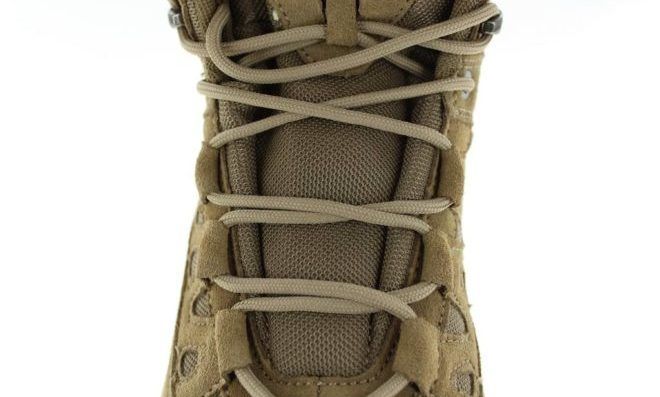
The finished products go to the quality assurance department where they are sorted, labeled, paired and grouped for distribution.
operational organization
If you get to know the industry well, you can earn a lucrative income in the shoe industry. It is necessary to learn all the intricacies of production, shoe fitting, choice of materials and equipment, observing a number of sequential operations and activities.
In order to start a shoe manufacturing business, the following points must be met:
- Acquisition of a site with the necessary equipment;
- purchase of materials;
- Certification and declaration of products;
- Contracts for the marketing of finished products.
Before acquiring materials and equipment, it makes sense to decide on the style of future collections. The format of the products can vary - production of classic leather shoes, rubber shoes or sports models. You can also decide on a product line: the production of men's shoes or the production of women's shoes. Children's products are very profitable and popular with customers.
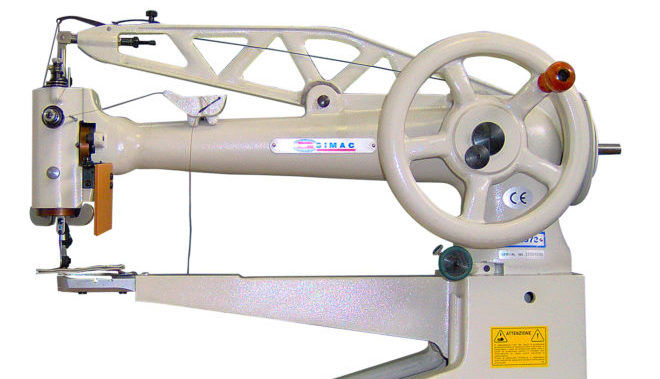
Seasonal times should also be taken into account. As a rule, the season begins in autumn and lasts until the following spring. During summer:
It should also be borne in mind that one of the major problems and difficulties of shoe production is the lack of high-quality domestic raw materials for shoes. Therefore, almost half of the products manufactured in our country are filled with imported materials.
So, the Russian shoe industry is not the strength of our country and is inferior in production to many countries.
Additionally
It is now considered the most reliable method of attaching the sole. But even now, many who use these shoes still find disadvantages in the casting method. For example, if part of the heel of the sole is worn out, it is necessary to change the entire pair of shoes, and shoes with nails or bortoproshivnyh, for example, the heel can be slightly changed.
Compared to nitrile rubber, PU soles have the following advantages: they are 200-300 grams lighter, more comfortable, more resistant to aggressive media, have better abrasion resistance.
If the shoe has a PU sole with a TPU lining, then such a shoe has additional advantages such as:
ADHESIVE MOUNTING METHOD.
Glue or double-glue attachment method for specialty shoes. In this process, the back edge is stitched to the backing with thread that passes through a natural leather wrap that insulates the stitching from the elements. Then porous or oil-resistant rubber soles are glued to the base.
The use of oil-resistant rubber provides reliable protection against petroleum products and oils, and is deeply grooved and non-slip. Styronip overlays can be used to give the shoe additional slip-resistant properties. The shoes are made of yufti or a combination of yufti and kirz. Cloth, faux fur or real fur can be used for insulation.

Choice of material depending on the season
Summer soles should be made of air-permeable material, especially fabric. Such models are more comfortable - the leather can breathe and does not overheat. The height of closed shoes should be medium or short, and the colors should be light, so the pair will heat up less due to its reflective properties. For open models (sandals, heeled sandals) it is better to choose natural leather, as it is breathable.
Off-season, manufacturers often make shoes from smooth or nubuck leather, eco-leather or artificial materials. Such models have a long service life, and feet feel comfortable in them, because they are breathable and moisture-resistant.
The best material for the upper of winter shoes - of course. Feet are warm, but there is no greenhouse effect. With proper care, the durability is longer than that of artificial leather. Natural leather is the best choice. Nubuck and suede are good alternatives.
Materials for the inner part
Lining layers for shoes are made taking into account properties such as thermoregulation, moisture resistance and breathability. The inner lining can be made of both natural and synthetic materials that guarantee comfort, heat retention and walking comfort.
Today's manufacturers use linings made of synthetic fibers, the properties of which are similar to natural fibers. Natural, composite or artificial skins, felt and insulating materials are often used in winter shoes, all of which retain heat. A leather lining is suitable for the autumn and spring seasons. Such models can be found in premium brands (except for pigskin).
Wood
With the rise of the environmental movement, this material is gaining new fame. Wooden soles give shoes a cool and elegant look. It can be birch, oak, beech or linden. Manufacturers also like to use cork wood, but since it is not suitable as a full-fledged sole, it is used for decorative purposes.
The disadvantages of this material are obvious: the wood is stiff and is easily trampled and deformed when in contact with water. In addition, the soft cork flooring quickly flakes off and suffers other damage.
TPE
This is an abbreviation for 'thermoplastic elastomer'. It is a versatile material that can be used in all seasons. It is strong, flexible and resistant to frost and abrasion.
Information. Its main feature is that it consists of two layers. The lower layer is harder and serves to reinforce the sole. The upper layer is porous and thus retains heat.
In addition, this material is one of the most environmentally friendly.
Thermoplastic plastic has practically no disadvantages. The only one - it is used only as an element of everyday shoes, because it not withstand extreme temperatures.
Read more:- Mortar for soles.
- Making hooves for shoes.
- The sole in the shoe is responsible for.
- Manufacture of shoe inserts.
- rim on the shoe.
- insoles for shoes.
- Manufacture of shoe lasts.
- Equipment for manufacturing orthopedic insoles.
